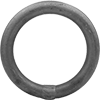Filter by
System of Measurement
Straight-Link Chain Trade Size
Material
Chain Style
Weight Capacity
Application
Specifications Met
Metric Chain Trade Size
Maximum Temperature
Export Control Classification Number (ECCN)
DFARS Specialty Metals
Material Handling
































